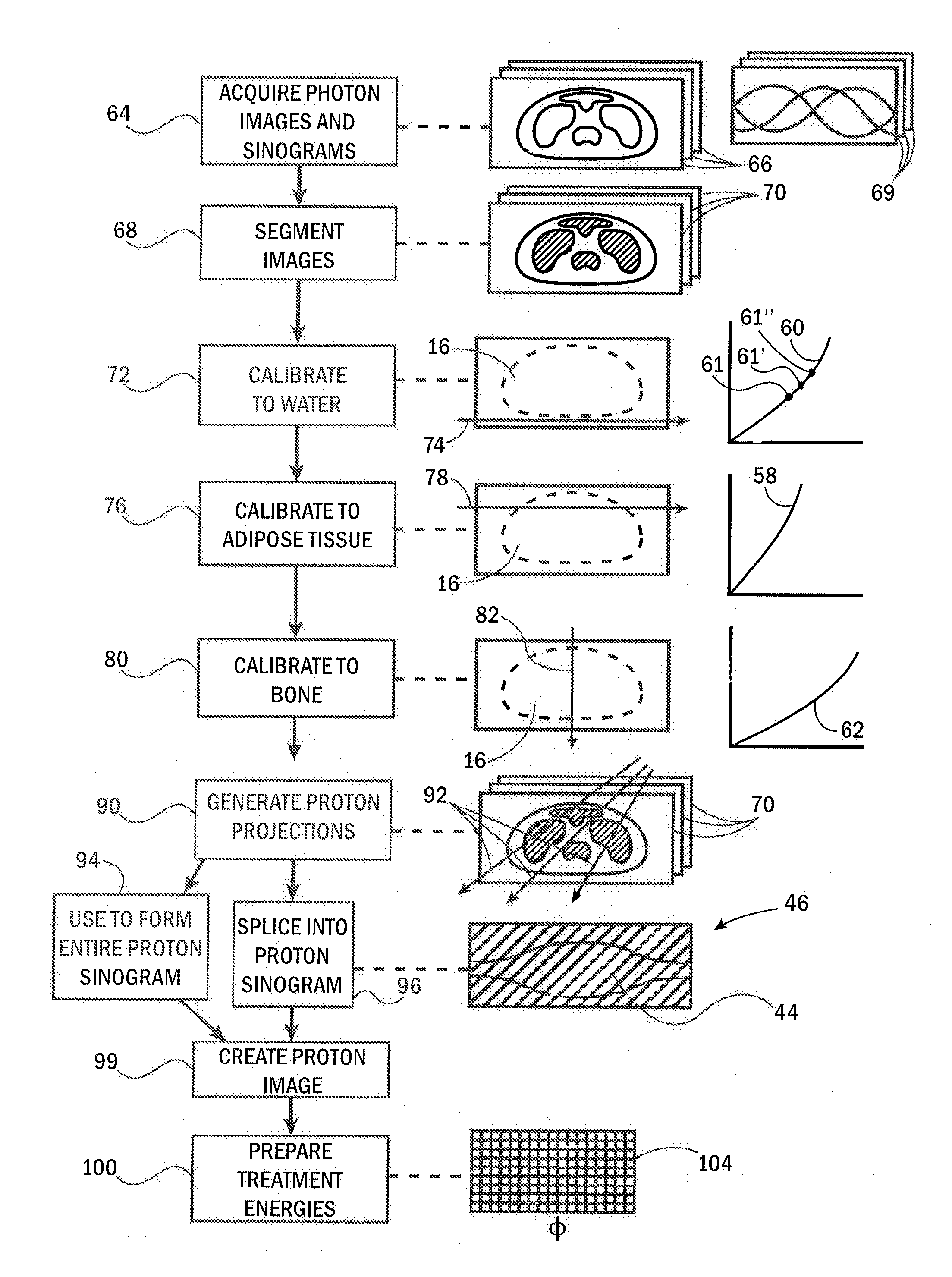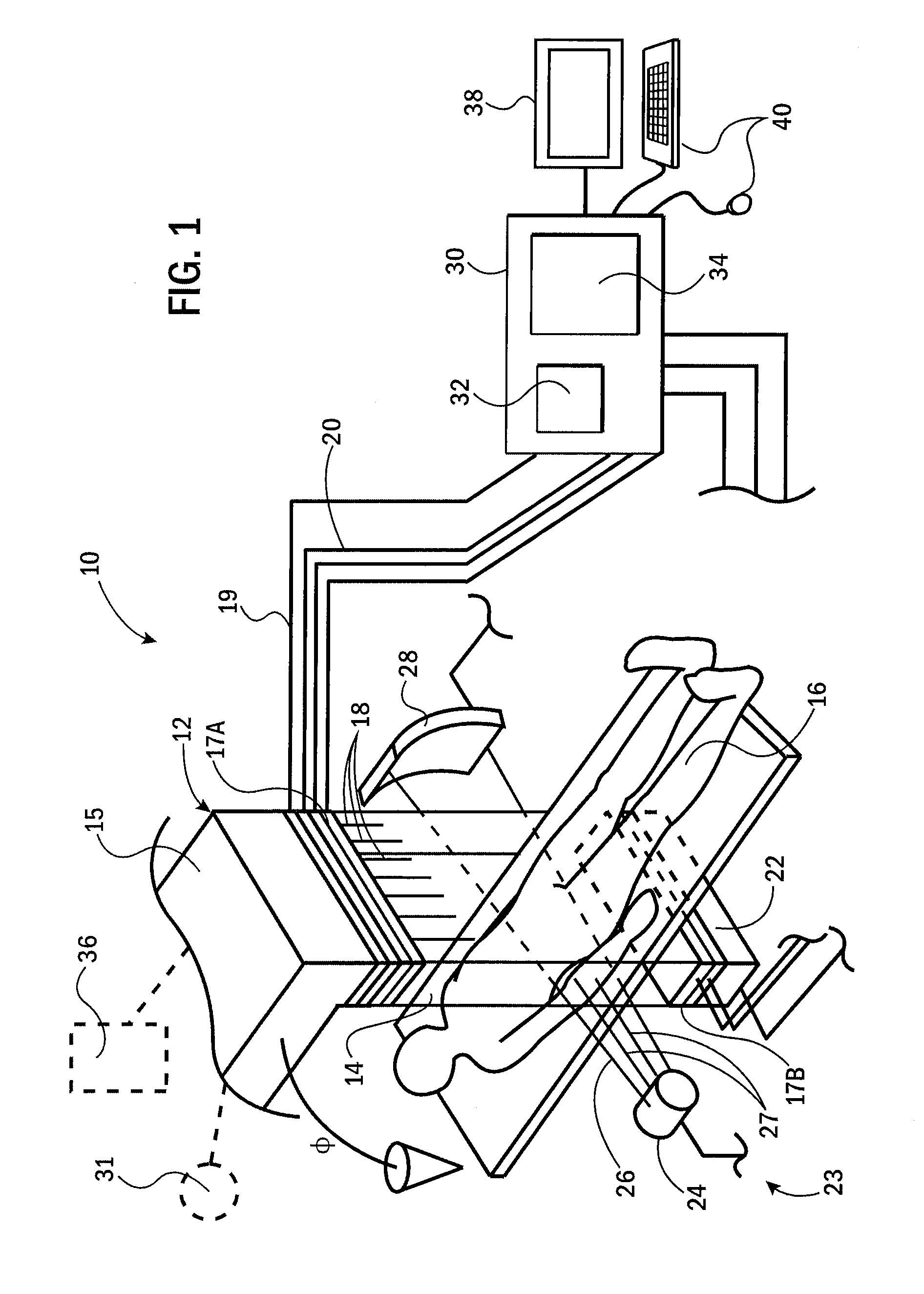Method and apparatus for generating proton therapy treatment planning images
a proton therapy and treatment planning technology, applied in the field of tumor radiation therapy treatment planning, can solve the problems of 3 to 5 percent error in practice using the best known conversion method, and the incongruity of converting x-ray photon attenuation to proton stopping power using a conventional x-ray ct image, etc., to achieve the effect of greatly reducing the inaccuracy of converting x-ray photon attenuation to proton stopping power
- Summary
- Abstract
- Description
- Claims
- Application Information
AI Technical Summary
Benefits of technology
Problems solved by technology
Method used
Image
Examples
Embodiment Construction
[0031]Referring now to FIG. 1, a combined proton therapy and imaging system 10 suitable for use of the present invention may provide a proton source 12, for example, being a repositionable accelerator (such as, but not limited to a dielectric wall accelerator) or an exit port of a conduit conducting a proton beam from a stationary cyclotron, for example using a series of quadrupole or other suitable magnetic directors.
[0032]The proton source 12 may be rotatable on a gantry 15 to direct a proton beam 14 at a patient 16 at a range of gantry angles φ about the patient 16, driven by a gantry drive 36. The proton beam 14 may be an areal beam or a scanned pencil beam and may be controlled in energy at a variety of different locations within the beam 14 according to an energy signal 19 controlling an accelerating voltage of the accelerator or material places in the beam such as a range shifter used to provide a pencil beam or the placement of an energy reducing filter into an areal beam 14...
PUM
 Login to View More
Login to View More Abstract
Description
Claims
Application Information
 Login to View More
Login to View More - R&D
- Intellectual Property
- Life Sciences
- Materials
- Tech Scout
- Unparalleled Data Quality
- Higher Quality Content
- 60% Fewer Hallucinations
Browse by: Latest US Patents, China's latest patents, Technical Efficacy Thesaurus, Application Domain, Technology Topic, Popular Technical Reports.
© 2025 PatSnap. All rights reserved.Legal|Privacy policy|Modern Slavery Act Transparency Statement|Sitemap|About US| Contact US: help@patsnap.com



